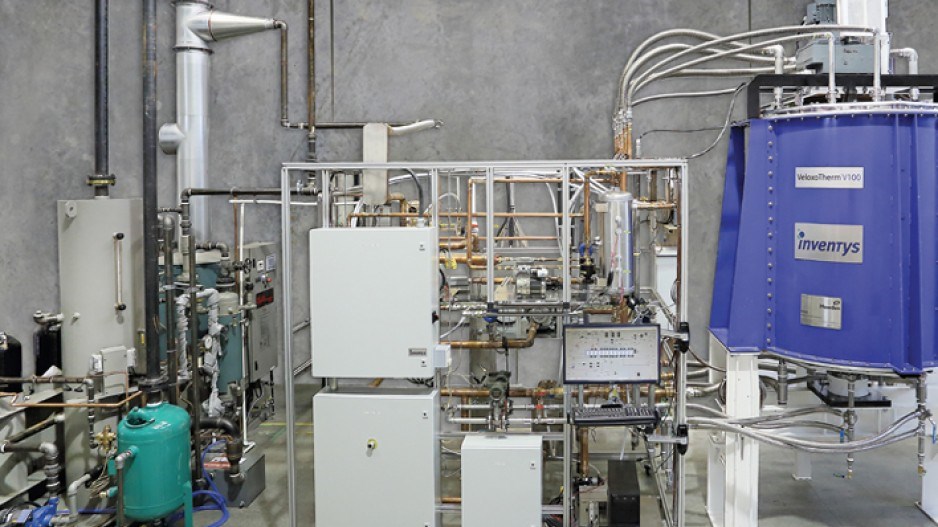A liquefied natural gas (LNG) boom in British Columbia would create 100,000 jobs and billions of dollars in revenue, according to the B.C. government.
But it would also create up to 73 million tonnes of carbon dioxide annually by 2020, according to the Pembina Institute. That would put B.C. 30 million tonnes over its own greenhouse gas reduction targets, the energy think-tank says.
About the only way to simultaneously increase CO2 emissions and prevent them from getting into the atmosphere is through some form of carbon capture and sequestration or reuse.
Inventys Thermal Technologies, a B.C.-based clean-technology company, has developed what has been described as “game-changing” technology that makes carbon capture more affordable.
The company's VeloxoTherm process can capture carbon dioxide from flue stacks at $15 per tonne, the company says – a claim that has been attracting investors like Chrysalix Energy Venture Capital, which recently took a stake in Inventys. It has also attracted Nobel Prize-winning physicist and former U.S. secretary of energy Steven Chu to its board of directors.
But the jury is still out on whether a nascent LNG sector will make carbon capture and storage a part of its business in B.C., or simply pay the $30-per-tonne carbon tax on the gas it will burn to power the LNG process.
Last week, the U.S. Environmental Protection Agency announced greenhouse gas reduction targets that would force coal-burning power plants in the U.S. to cut CO2 emissions by 30% by 2030. Should some of those reductions be obtained through carbon capture, Inventys could eventually find a market for its technology in American coal-fired power plants, said Inventys CEO André Boulet.
But for now, the big market for the company's technology is in Alberta and Saskatchewan in enhanced oil recovery – the low-hanging fruit for the carbon capture sector.
“The only market, truly, is enhanced oil recovery,” Boulet said. “It's probably the largest consumer of CO2 by far.”
Once captured, CO2 can either be sequestered underground or used for a variety of industrial purposes. It can be used in hydraulic fracturing, for example, and in greenhouses. It can also be pumped underground in older oil reservoirs to facilitate extraction.
Incumbent technologies, which use solvents to remove CO2 from flue stacks, cost about $80 per tonne. Inventys' technology – which uses an absorbent process instead of solvents – can do the same job for less than a fifth of the cost, the company says.
“We really have a system that is both much cheaper and as well much smaller than anything we have seen,” said Chrysalix CEO Wal van Lierop. “That is what drove our investment decision.”
“[It's] game-changing,” he said. “This technology could enable the production of billions of barrels of stranded oil reserves in North America alone.”
Using carbon capture technology to sequester CO2 has a clear environmental benefit. Using it to pull more oil out of the ground may seem less beneficial, but as Boulet points out, a lot of the CO2 injected underground stays there.
According to the Integrated CO2 Network (ICO2N), there are half a dozen carbon capture projects either proposed or underway in Western Canada, including a proposed carbon capture and storage project near Fort Nelson, B.C., that Spectra Energy Corp. (NYSE:SE) is considering.
But carbon sequestration is still expensive. Even if Inventys can capture carbon at $15 per tonne, compression, pipelines and monitoring can add $10 to $20 per tonne to the cost, which is why most of the carbon capture projects are currently focused on enhanced oil recovery.
“Since carbon capture and storage is a costly activity, it's important that we have a revenue stream associated with it, and that revenue is, for the most part, enhanced oil recovery,” said ICO2N managing director Robert Craig.
He said it will take government support to move the first projects forward. But he expects to see a growing market for carbon capture technology.
“As [technology costs] come down and as carbon compliance costs come up, we'll reach a point ultimately where these projects will move forward on their own.”




